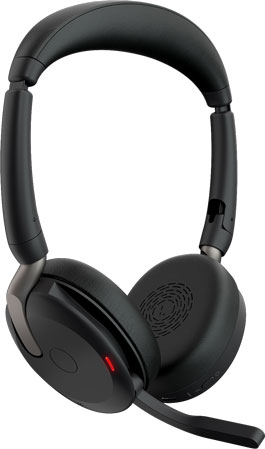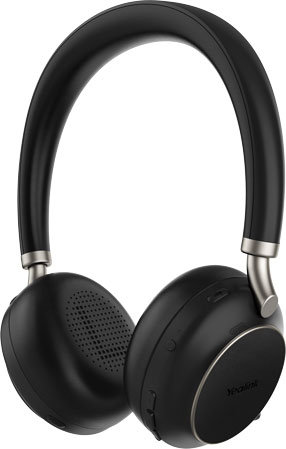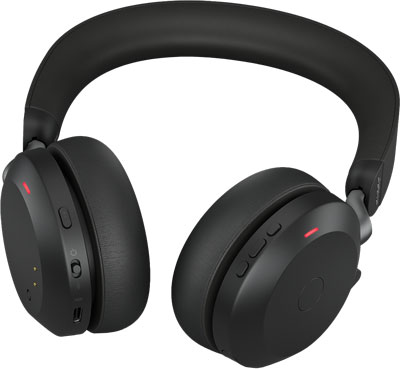Active Noise Cancellation (ANC) is one of the most popular features of stereo headsets today. When you’re in a noisy workspace like an open office or airplane, you want that noise gone.
We covered ANC in detail in our blog: Active Noise Cancellation vs Passive Noise Cancellation. If you want to know more about headsets in general, check out our clear, detailed Headsets Buyer’s Guide.
But what if, instead of blocking out external sound, you actually want to hear what’s happening around you without taking off your headset?
Look for a headset with audio pass-through.

What Is Audio Pass-Through for Headsets?
Audio pass-through is, literally, the opposite of Active Noise Cancellation:
- When ANC is on, a headset uses external microphones to sense ambient sound, then plays counter-noise in your headphones to cancel it out.
- When audio pass-through is on, a headset uses external microphones to sense ambient sound, then reproduces the ambient sound in your headphones.
Note that, when using audio pass-through, you’re not listening directly to what’s happening around you: you’re listening to a reproduction via microphones and speakers.
To make audio pass-through good for the user, two things need to happen. The headset needs to reproduce the audio as fast as possible and the audio needs to be of convincing, naturalistic quality. To make the audio of sufficient quality, the headset uses technology to determine appropriate volume and equalization levels.
In our experience, every headset has achieved the necessary speed. Audio quality is more subjective, but so far we can tell that the sound isn’t direct from reality. That said, it has been perfectly usable.
When would you use audio pass-through on headsets?

What Are the Benefits of Audio Pass-Through?
The primary reason why audio pass-through has become a desired technology is convenience: you can hear people talking to you without taking off your headset.
When considering speakers, there are two types of office headsets: stereo or two-ear headsets and mono or one-ear headsets.
Many users choose mono headsets because they’ll have a free ear to hear what’s happening around them. Another reason people like using audio pass-through is to hear themselves speak when they’re on a call.
Stereo headsets help you focus on your work by cutting you off from your surroundings. Because they have two speakers instead of one, stereo headsets provide superior noise cancellation and sound quality when compared with a similar mono headset.
Audio pass-through lets you have the benefits of both types of headset: stereo and mono. No wonder it’s so desirable!

Names for Audio Pass-Through
To finish, let’s talk about names.
Manufacturers brand their versions of audio pass-through. For example, when shopping for Jabra Headsets you need to look for HearThrough, but when shopping for Poly Headsets you need to look for OpenMic. Regardless of the branding, it’s the same technology, both in terms of how it works and how you experience it (although some do it better than others, of course).
Here’s an incomplete list of branded names for audio pass-through, including names from some of the most popular headphone manufacturers:
- Apple = Transparency
- Bose = Aware Mode
- Google = Transparency Mode
- Jabra = HearThrough
- Poly = OpenMic
- Samsung = Ambient Sound
- Sony = Ambient Sound Mode
Yealink Headsets don’t have a specific branding for the feature, but it’s referred to as “fully transparent” or “ambient sound” in their materials.
If you see something about a headset with “transparency” or letting in “ambient sound” without taking it off, you’re almost certainly dealing with audio pass-through.

